Taipei City boasts an outstanding public transportation network, with the renowned subway and light-rail system, commonly known as MRT, leading the way. However, it is the extensive bus network that truly takes the spotlight. With close to 500 bus lines and over 3400 bus stops, the city is well-served by this robust system. The bus network in Taipei City is incredibly comprehensive, to the extent that when depicted on a map, the bus lines intricately mirror the city’s major road network. A cursory glance at the network map might even make you mistake it for a regular road map.
While exploring the wealth of data available on DATA.GOV.TW, I stumbled upon a fascinating dataset featuring the complete bus routes of Taipei City. Being an avid enthusiast of both maps and data analysis, I couldn’t resist delving deeper into the intricacies of Taipei City’s bus network. If you’re interested in discovering more about the dataset, as well as my process of creating maps and analyzing the data, I invite you to find detailed information on this topic here.
Different types of bus lines
In Taipei City, it’s important to note that not all bus lines operate on a regular basis. The city accommodates several special lines designed for specific purposes, including commuter buses and lines that exclusively run on weekends or during special seasons. When examining the maps and conducting data analysis, these special lines, as well as intercity bus lines, are excluded from consideration. This refinement allows us to focus on the nearly 400 bus lines that operate regularly. However, determining the exact total number of bus lines poses a challenge due to the presence of sub-lines or branch lines, which may differ only slightly in their routes.
The table below provides a comprehensive breakdown of bus lines in Taipei City based on their types and quantities.
In this table, the “Main Lines” column refers to bus lines with distinct numbers. On the other hand, the “All Lines” column encompasses all branch lines associated with a particular main line. For instance, while there may be a bus numbered 212, there are also additional lines like 212 Express and 212 Night Bus. Despite their slight route variations, these lines are considered separate entities, yet they all belong to the same main line.
| Type | Main Lines | All Lines |
|---|---|---|
| 218 | 244 | |
| 54 | 63 | |
| 28 | 42 | |
| 13 | 16 | |
| 15 | 15 | |
| 12 | 13 | |
| Total | 340 | 393 |
Bus line maps
Now, it’s time to explore the route maps. The gallery below showcases the route maps corresponding to the lines mentioned in the previous table. These maps solely display the bus routes without any depiction of the roads. If you are acquainted with Taipei City, you’ll quickly notice the remarkable resemblance between the bus lines and the city’s road network. However, for those who are unfamiliar with Taipei City, you can follow this link to Google Maps, where you’ll find the bus lines superimposed on the road map for better visualization.
Longest and shortest bus lines
When considering all the bus lines collectively, the combined distance from terminal to terminal station spans an impressive 5,443 kilometers, surpassing the width of the United States from coast to coast. On average, a bus line in Taipei City measures approximately 13 kilometers in length. However, it’s worth noting that the length of bus lines varies significantly, ranging from as short as 2 kilometers to a remarkable 29 kilometers (the longest line). Given the distinct functions of each bus line type, it would be unfair to compare them all together. Consequently, we will examine the characteristics of each type individually.
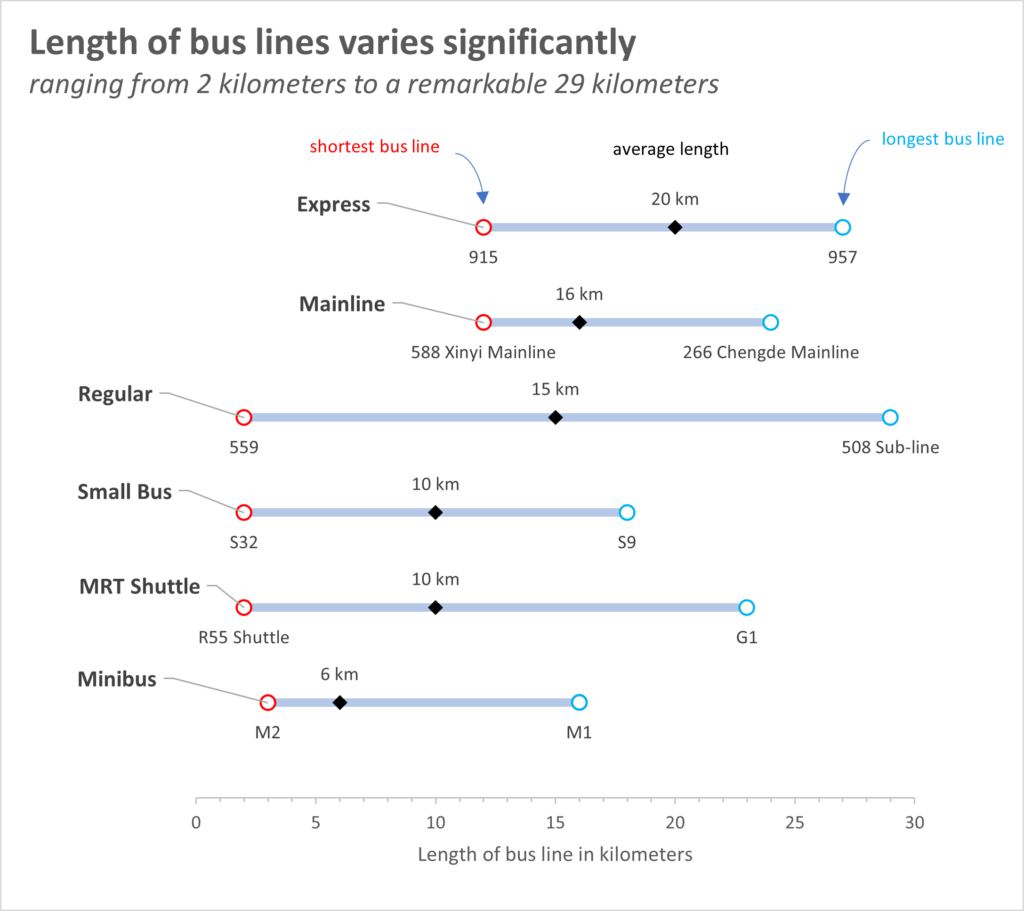
Bus line density
The distribution of bus lines in Taipei City is not uniform, with certain regions having a higher concentration of lines while others are served by only a single line. The following map illustrates the density of bus lines, indicating the number of lines operating on specific road sections. As expected, main roads and intersections exhibit a high density of bus lines.
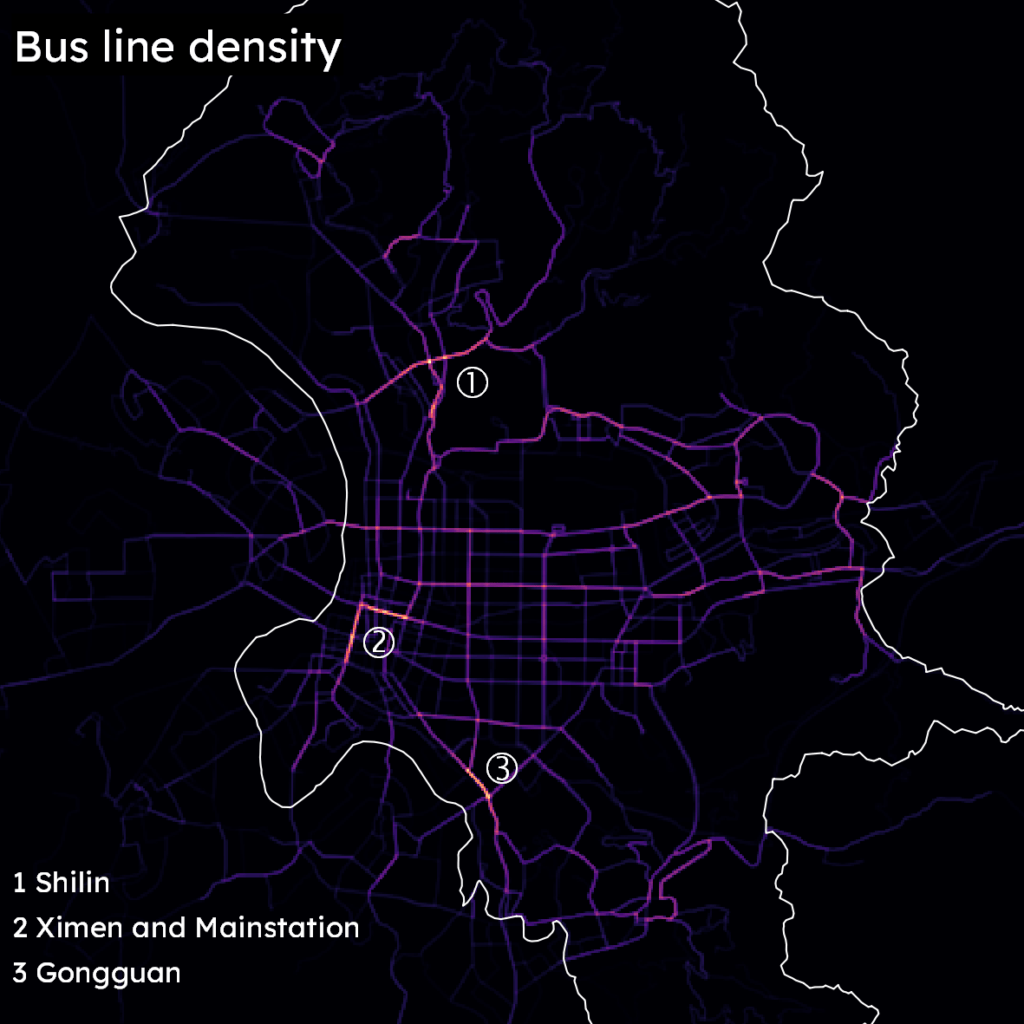
However, three distinct areas in Taipei City stand out: Shilin (marked as Number 1 on the map), Ximen and Taipei Main Station (Number 2 on the map), and Gongguan (Number 3 on the map).
The presence of Ximen and Taipei Main Station as prominent hotspots is not surprising. This area serves as a major transportation hub for trains, high-speed rail, intercity buses, airport express trains, and is a bustling shopping and tourist district.
Shilin, near the famous night market, and Gongguan, on the other hand, offer interesting insights. In Shilin, bus lines likely play a crucial role in connecting Tianmu and other areas not serviced by the MRT network. The northern part of Taipei City is primarily linked by the red MRT line, while bus transport serves the remaining areas.
In Gongguan, numerous north-south and east-west lines intersect, providing convenient connectivity. Additionally, buses departing from Gongguan cross the Xindian River to reach Yonghe and Zhonghe. The presence of an expressway to Xindian and Yonghe also attracts many express buses passing through Gongguan.
Bus line operators
Lastly, let’s explore which areas of the city are served by different bus companies. In Taipei City, as well as other cities in Taiwan, buses are not operated by city-owned companies. Instead, private companies are contracted by the city to provide bus services. In total, there are 13 bus companies operating in Taipei City. However, these companies belong to only five parent companies, which are depicted in the maps below.
Interestingly, bus companies tend to focus on specific areas of the city, although most of them cover the majority of Taipei City. The exception is Citi Air Bus Co., which serves a narrow corridor in the southern part of the city, making it somewhat unique. Southeast Bus primarily operates in the southeast region of Taipei. Zhongxing Bus Group and Taipei Capital Bus Group concentrate their operations in the city center, while Danan Bus and Shin Shin Bus serve the northern and southern parts of the city, respectively.
Adding to the intricacies of the operators, it’s worth noting that they can lease buses from other companies within the same parent company to run on certain lines. For example, Taipei Bus Company may use buses from San Chung Bus to operate their lines.
Final words
I hope you found this information intriguing. Behind the scenes, there are even more fascinating aspects at play, such as the intricate process of assigning bus routes, the potential consequences for companies with subpar services, and the financial challenges faced by many operators, some of whom are teetering on the brink of bankruptcy.
Thank you for joining me on this exploration of Taipei City’s bus network. As always, there is much more to discover and learn, and perhaps I have sparked your interest to delve deeper into this topic.
Enjoyed this article? You can get early access to my maps, blog posts, and exclusive content by becoming a supporter on Ko-fi. I also share updates and insights on Facebook, post photography and snapshots on Instagram (@eyes_on_taiwan), and showcase maps and Taiwan data on Instagram (@taiwan.maps.dataviz). You’ll also find me on Threads and Bluesky, where I share new maps and links to blog articles. Looking forward to connecting with you!
If you like this content and don’t want to miss new blog posts, consider subscribing to our newsletter!
Data Disclaimer
The information and maps presented in this article are intended to provide insights into Taipei City’s bus network. However, it is important to note that the data may not be complete and could potentially contain errors. Users are advised to exercise caution and verify the information independently before relying on it for any specific purposes. The accuracy and completeness of the data cannot be guaranteed, and the author and website shall not be held responsible for any consequences arising from the use of this information.
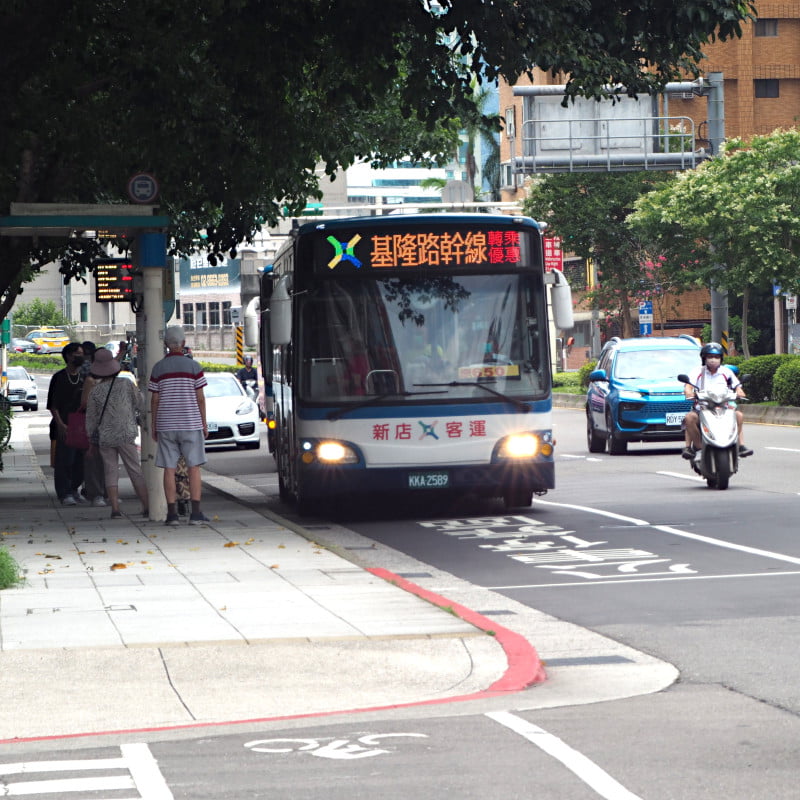
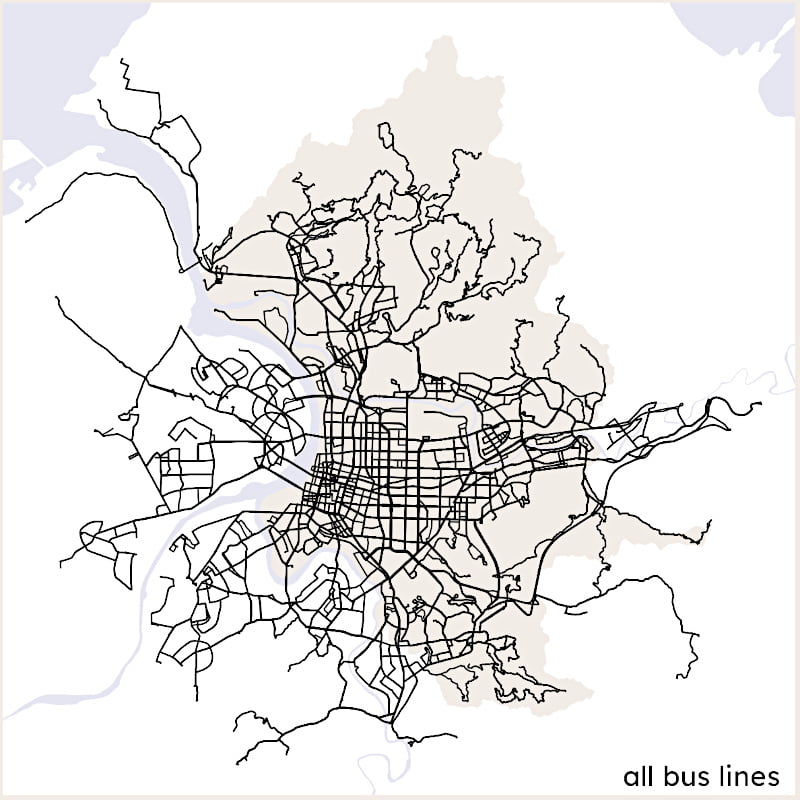
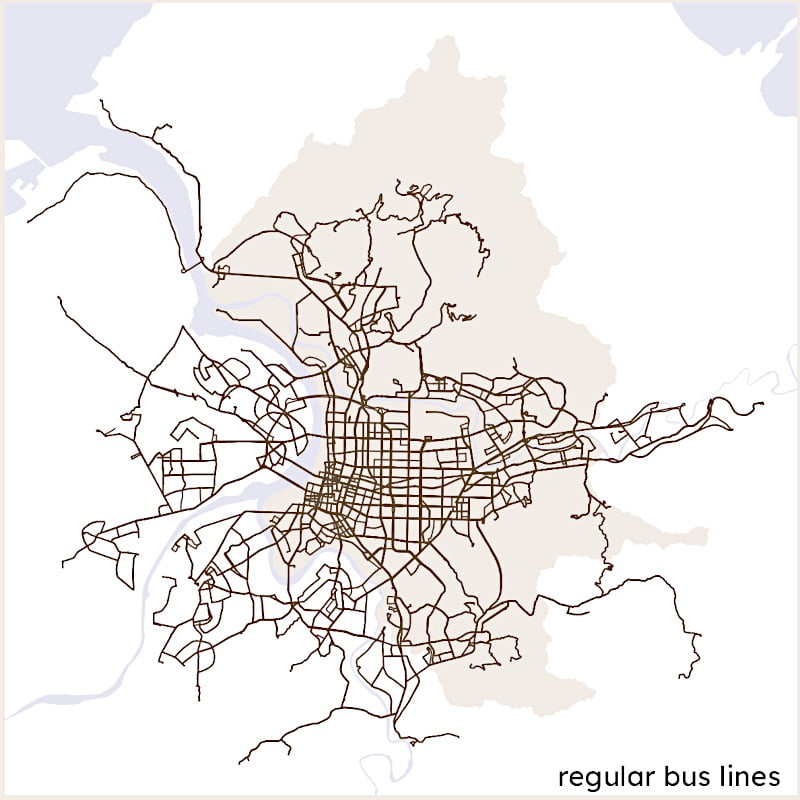
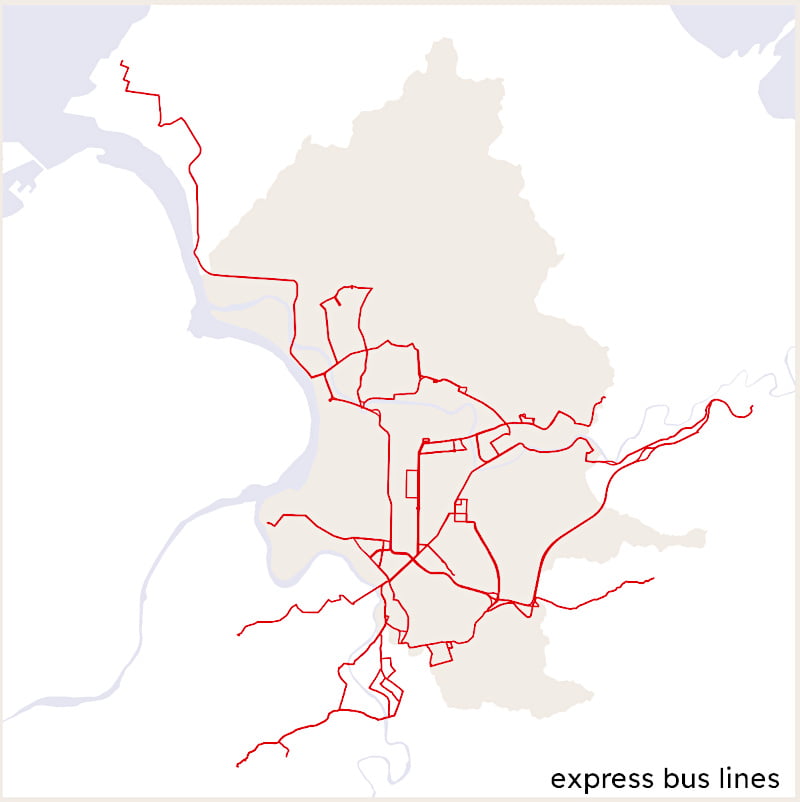
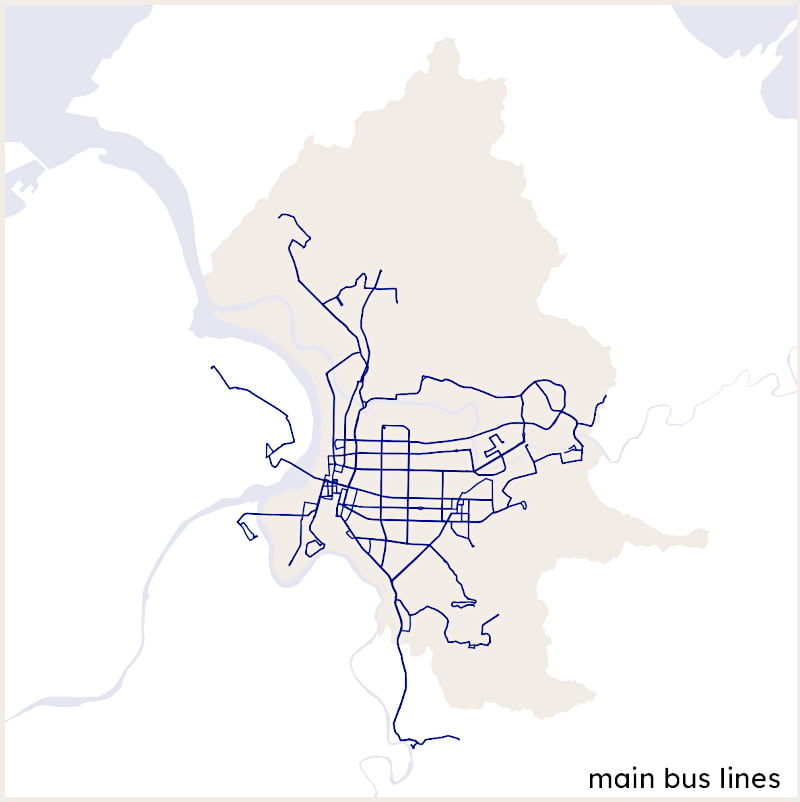
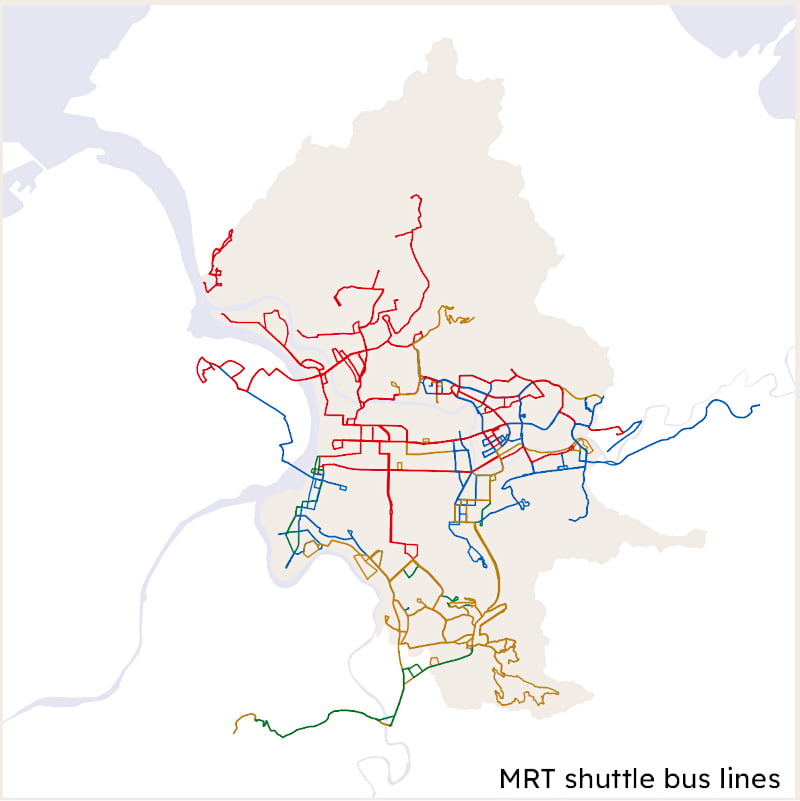
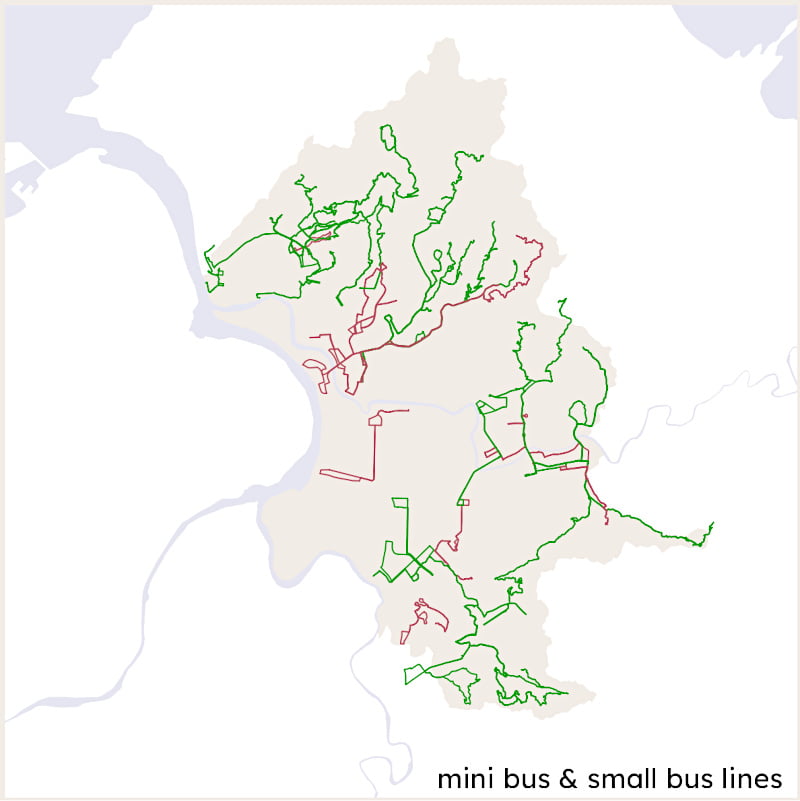
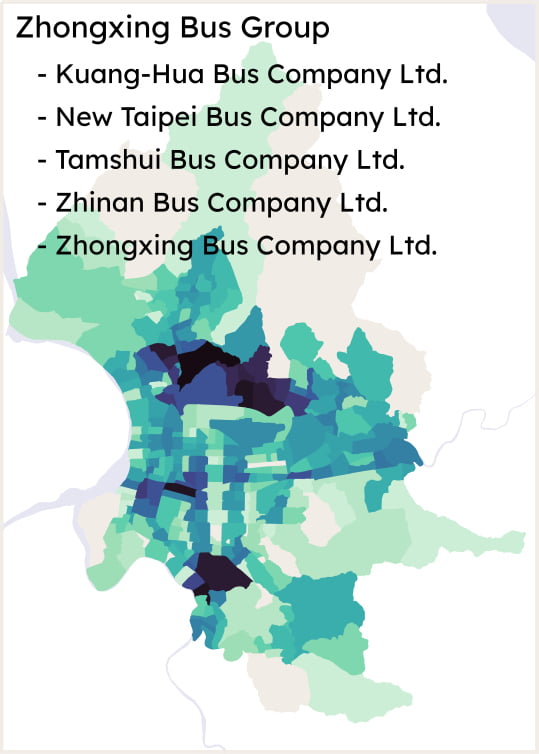
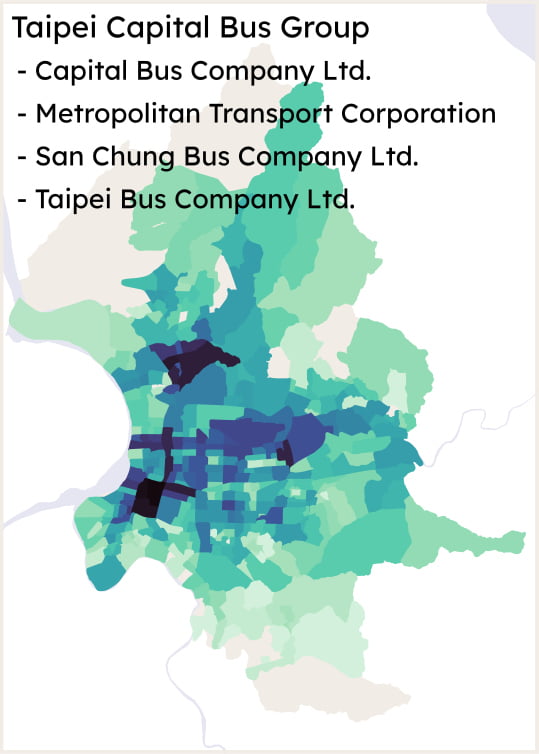
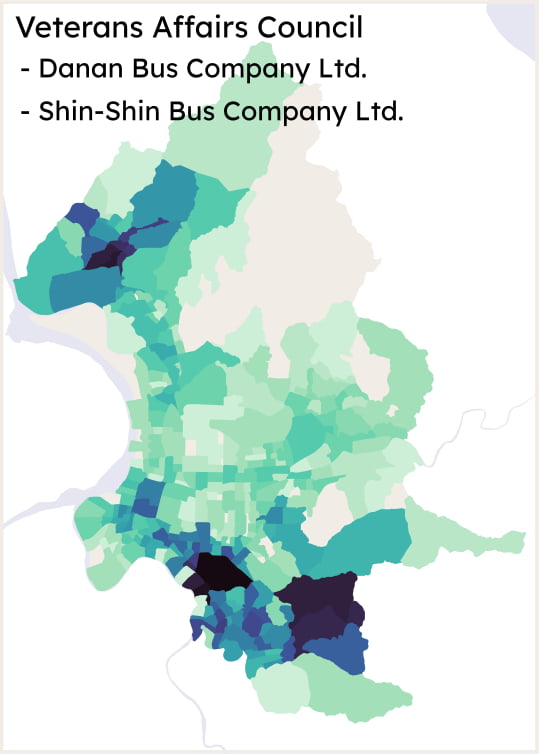
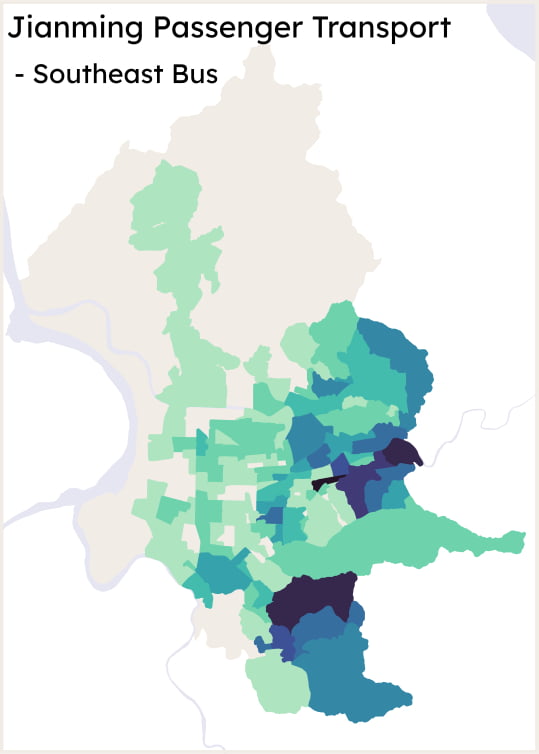




Back then in the day (before internet, google and smartphones) you were a hero if you could manage to use the bus ‘system’ as a foreigner. Without Mandarin knowledge, a kamikaze licence and patience, it was impossible to figure out how to change buses, pay them and arrive at a place that was still in Taiwan 😉
Great article, thanks
Still intrigued by what a Frog Bus is
I don’t know exactly what Frog Bus means, but the Chinese name of these bus lines is 跳蛙. Which means “jumping frog” or can also describe someone who is very agile and jumping or moving quickly. I assume that Frog Bus are lines that cover short distances with only a few stops. So they “jump” from one place to another.